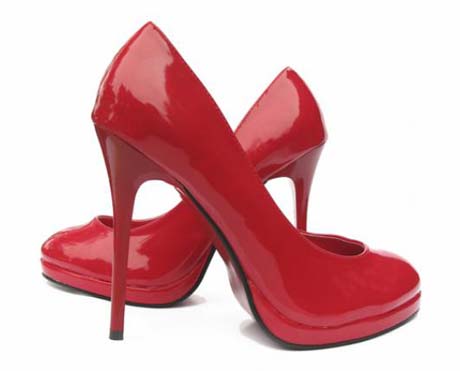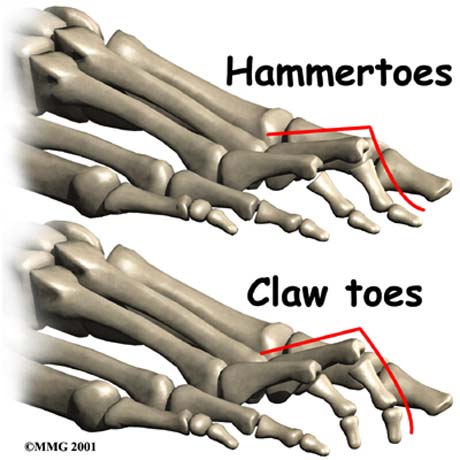METATARSALGIA

The term metatarsalgia is a symptom rather than disease and is a compound word derived from Greek words metatarsia and algos (pain).
It refers to pain localized to the anterior - plantar surface of the foot (ball of the foot) and usually develops gradually and not suddenly.
Athletes who take part in competitions demanding as running, marathon, tennis, jump height or length u, have higher incidence rates of problems in the leg.
The etiologies are numerous and encompass a spectrum of diseases processes.
CAUSES
- Overuse syndrome. For example, in runners and athletes, which can cause some mild inflammation in the metatarsal heads and nearby joints. Other sports such as tennis or sports that involve jumping may also put extra stress on the metatarsal heads and lead to inflammation and pain.

- Wearing high-heeled shoes. Women tend to wear very high heels shoes. High heels shoes carry large loads on the heads of the metatarsals and is a frequent cause metatarsalgias.

- Obesity. This can put extra stress on the feet in general creates conditions worsening the problem.

- Short Achilles tendon. This can affect the way that pressure is distributed across the foot and may lead to extra stress on the metatarsal heads.
- Morton Neuroma. Quite common clinical entity related to swelling and hypertrophy of the digital nerve between two toes. The symptoms may include pain, burning and local numbness extending fingers.
- Claw foot (pes cavus). In pes cavus, your foot has a very high arch which does not flatten when you put weight on your foot. It happens because of an imbalance in the muscles of the foot. It can run in families. Sometimes pes cavus can happen out of the blue. However, most people with pes cavus also have a neurological problem such as cerebral palsy, spina bifida, muscular dystrophy or polio. Pes cavus can mean that extra stress is placed on the ball of the foot, which can lead to metatarsalgia.
Young woman suffer from severe metatarsalgia due to pes cavus foot
High pressure point on the foot produce skin hypertrophy and pain
The cavus foot is the cause for creating various problems in the foot like creating hammer toes and bunions on the toes

Foot MRI: Metatarsalgia due to pes Cavus

MRI is a modern tool for the accurate evaluation of the foot deformities. Measuring the angle between the second toe and the second metatarsal demonstrates the great load in 2nd metatarsalphalangeal joint causing metatarsalgia
Young woman with pes cavus. The cicles indicates the pain areas
The varus heel (heel turn inwards) may be a cause metatarsalgias (4th and 5th metatarsal)
- Hammer toe or claw toe deformity. With a claw toe you have an abnormal position of all three of the joints in the toe. The joint with the metatarsal bone is bent upwards, the middle joint in the toe is bent downwards and the end joint in the toe may also be bent downwards. The toe resembles a claw. With a hammer toe, your toe is permanently bent at its middle joint so that it looks like a hammer. There are a number of conditions that can cause these toe deformities. These can include poorly fitted shoes, injury to the toes, bunions and rheumatoid arthritis. Hammer and claw toe can also occur in someone with pes cavus. They can also run in families. These toe deformities can mean that extra stress is placed on the ball of the foot, which can lead to metatarsalgia.

The deformation of the fingers is a cause metatarsalgias
- Hallux valgus. Common deformity of the great toe which the great toe tilt to the other fingers. Many times it can pass beneath them, creating intense deformation and difficulty in walking. The callus formation on the plantar surface of the big toe and the second and third finger is frequent and causes metatarsalgia.
Woman 40 years old. Hallux valgus bilaterally
- Previous surgery to the foot. For example, previous surgery for bunions or Morton's neuroma (plantar surgical exposure). Today i prefer to operate Morton's neuroma with dorsal foot exposure to avoid this complication.
- Stress crack (fracture) of a metatarsal. A stress fracture is a type of incomplete fracture in a bone. Stress fractures tend to occur as a result of overuse and are known as overuse injuries. A metatarsal stress fracture is a stress fracture in one of the metatarsal bones in the foot. Occurs in people with persistent and intense physical activity (long distance running - Marathon etc), or military marches -long distance walking with unsuitable shoes and continuous impact of the foot on the ground because military salute.

- Freiberg's disease. This is a rare disease characterised by osteonecrosis of the second metatarsal, most commonly seen in teenage girls.
- Arthritis or gout. This can cause inflammation of the joints in the ball of the foot or of the big toe and can be a cause of metatarsalgia.
- Diabetes. This can cause damage to the nerves due to demage of the small artery of the nerves (vasa nervorum), in the feet and can be a cause of metatarsalgia.
EVALUATION
The key element to address the metatarsalgias is clear investigating the cause of this.
The patient's history will provide information about the general state of health such as the existence of diabetes mellitus, increased uric acid in the blood or a neurological problem, the existence of related persons with foot problems, as well as for sports and professional activities and level these requirements.
The clinical examination of the foot will demonstrate existing problems such as a large arch of the foot -pes cavus-, hallux valgus, inflammation in the joints of the fingers and feet, the existence of calluses or ulcers on the feet or toes, the existence of edema and the color and condition of the foot skin.
Blood tests as will give sufficient information on the existence of diabetes mellitus, increased uric acid and the possibility of autoimmune disease.
Radiographic examination will provide information for bone status, evaluation of mechanical and anatomical axes of the foot to help the specialist Orthopaedic for making decisions about how to address the problem.
Bone scan of your foot. Your doctor may suggest this if they suspect a stress fracture of one of your metatarsal bones.
MRI with intravenous contrast or not highlights the Morton's neuroma and evaluate the soft tissues of the foot.
The foot analysis - mechanical, electronic static and dynamic - is a tool that helps the specialist Orthopaedic surgeon to assess the pressures on the sole of the foot during stance and gait. This will be a more complete understanding of the patient's problem and the designed treatment plan more accurately
Mechanical foot analysis in boy 6 years old with pes planovalgus deformity
Dynamic electronic foot analysis


